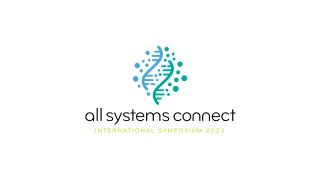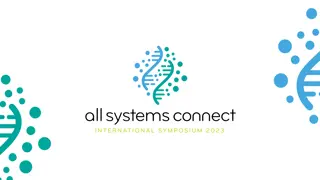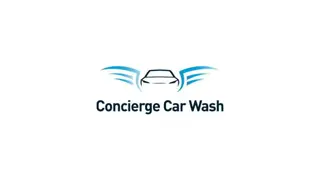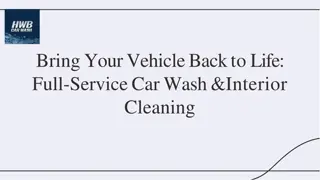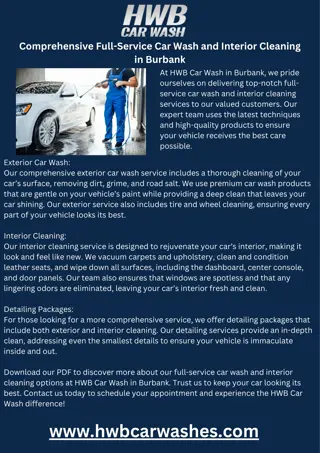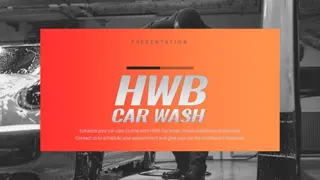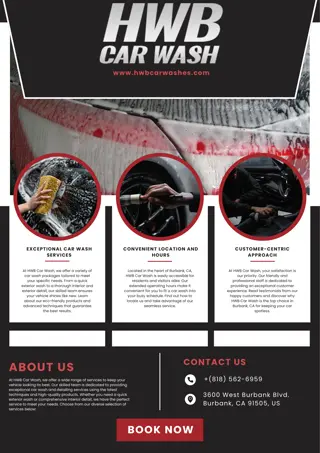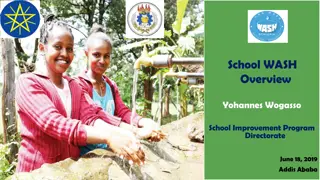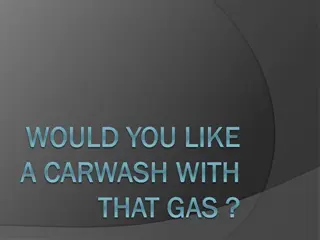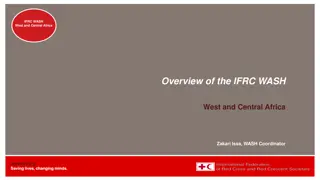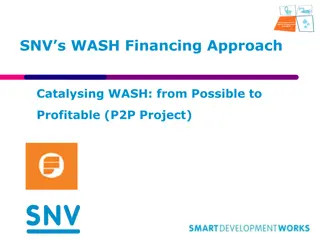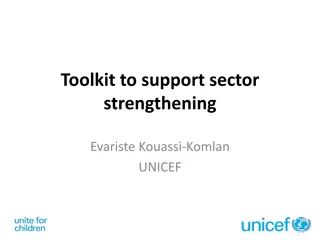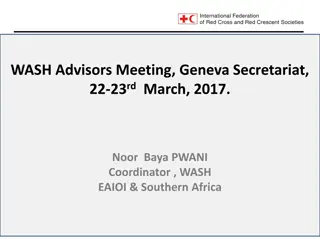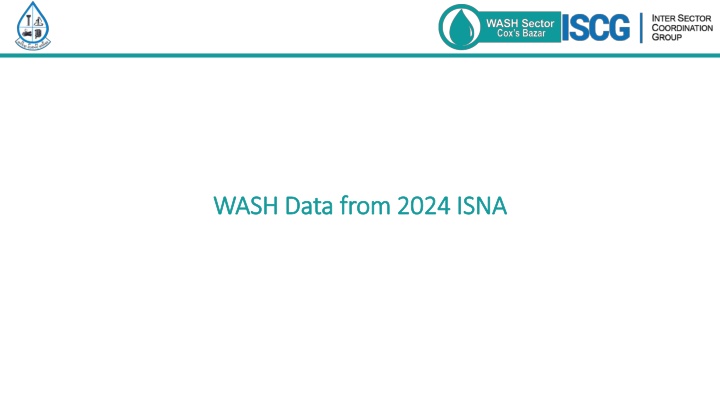
Insightful Data on WASH Conditions in 2024 ISNA Refugee Camps
Explore comprehensive data on water, sanitation, privatization, and solid waste management in 2024 ISNA refugee camps. Discover key percentages, usage patterns, and access levels to essential services for households and individuals. Gain valuable insights for informed decision-making and resource allocation in humanitarian efforts.
Download Presentation

Please find below an Image/Link to download the presentation.
The content on the website is provided AS IS for your information and personal use only. It may not be sold, licensed, or shared on other websites without obtaining consent from the author. If you encounter any issues during the download, it is possible that the publisher has removed the file from their server.
You are allowed to download the files provided on this website for personal or commercial use, subject to the condition that they are used lawfully. All files are the property of their respective owners.
The content on the website is provided AS IS for your information and personal use only. It may not be sold, licensed, or shared on other websites without obtaining consent from the author.
E N D
Presentation Transcript
WASH Data from 2024 ISNA WASH Data from 2024 ISNA
Background Background Sampling Method: A stratified random sampling with probability proportional to the population size at camp level. Sample Size: Refugees: 3,465 HHs (Ukhia 2730, Teknaf 735), 105 HHs from each Camps Data Collection: A joint data collection process has conducted by ISCG, UNHCR/ACTED and IOM/NPM from August to September 2024, 90% confidence interval and 10% margin of error
Water Water % of HH using tap-stand as primary source for drinking water 68% % of households reporting having enough water to meet all their HH needs 85% 20% 5% 3% 3% 0% 15% Public tap Deep tubewell Piped-water household Shallow tubewell Hand-pump (unknown) Surface unsafe water No Yes Average 23 liters of domestic water collected per person per day
Sanitation Sanitation % of female family member feel safe using the communal latrine at night % of people with disabilities feel that they have sufficient access to the latrine? 68% 50% 49% 32% 1% 0% Yes No Don't know Yes No Don't know
Privatization Privatization % of households having their own private family latrine % of households having built they private family latrine
Privatization Privatization % of households having their own private piped-water % of households having their own private tube-well 93% 94% 7% 6% 0% Yes No Don't know No Yes
Privatization Privatization % of households having their own bathing place 90% % of different uses of private bathing place. Bathing 100% Laundry 77% Washing dishes 73% Hand-washing 70% Urinate 62% 10% Defecating 3% 0% Others 1% Don't know No Yes
Solid Waste Management Solid Waste Management % of household segregating waste at household level (observation) HHs who frequently find visible waste in their surroundings (vicinity) 84% 48% 44% 11% 5% 0 Yes, I have seen the 2 bins and waste is segregated No, there is no 2 bins Yes, I have seen the 2 bins but waste is not segregated No, household decline to show the bins 6% 2% Sometimes Never Often Always Frequency of waste collection from the household HHs other means to throw garbage when no one is collecting (by response) 39% 87% 35% 21% 2% 1% 1% 7% 3% 2% 1% Through open space Through into the drain Others Communal pit/bin Burry it Burned Everyday No one is Once in a week Once in two days Twice a week collecting
Solid Waste Management Solid Waste Management % of household sell valuable waste 92% 6% 1% Yes No Don't know
Hygiene Hygiene The last time women in HH receive their menstrual kit HH satisfaction with the quality of menstrual hygiene kits 83% 62% 10% 34% 3% 1% 1% 1% Less than 6 months ago 6 to 9 months ago I did not receive 9 to 12 months more than 12 months Female HH member not available 3% 0% Very satisfied Satisfied Unsatisfied Very unsatisfied
Hygiene Hygiene % of households reporting having soap during assessment (observation). No, they do not have soap 5% Household respondent saying yes, but enumerator did not see the soap 10% Yes, enumerator has seen soap 85%
Knowledge Sharing Knowledge Sharing 86% of people interviewed able to identify at least three means to protect themselves from diarrheal diseases 87% of people interviewed able to identify at least three critical handwashing times 100% 99% 88% 70% 65% 36% After Before eating Before cooking/meal preparation defecation/going to latrine Hand-washing Cover food Cook food well
Health Sector: Health Status and Concerns Health Sector: Health Status and Concerns In the last three months, have you or anyone in your family experienced any of the following health conditions? (Multiple choice) 0% 20% 40% 60% What are the top 5 health problems faced by your household? (Rank 1 to 5, 1 being the most critical) Skin diseases, including scabies and fungal infections Diarrhoea (AWD/ Cholera/ Dysentery) 44% 33% Score 0 200 400 600 800 1000 Gastroenteric problems/PUD 31% Acute Respiratory Infections (URTI/LRTI) 933 Hypertension (HTN) 30% Diarrhoea (AWD/ Cholera/ Dysentery) Acute Respiratory Infections (URTI/LRTI) 838 30% Skin diseases, including scabies and fungal infections Other 19% 788 Dengue (suspected/ confirmed) 17% Gastroenteritis problems/PUD 686 Eye Diseases 16% Hypertension (HTN) 589 Hepatitis B & C 16% Diabetes Mellitus 14%
Livelihoods and Skills Development Sector Priority Needs and Gaps 73% of households have at least one income source 79% of HH has single sources of Income 55% of households earn less than 5,000 BDT/month (MSNA 2023 median income: 3,000 BDT) # of sources of income Single Source 79% Two Source 18% Three Sources 3% 35% of individuals contribute to household income Men (25-60) are primary earners (23%), while women in this group contribute only 2% Men (18-24) contribute 9%, women only 1% Four or More sources 0% Age Gender Segregation of currently contributing to household income? 35% How much is your total HH income average per month? 23% Range % 15% 23% 1-3000 BDT 9% 8% 7% 32% 3001- 5000 BDT 2% 1% 22% 5001_-7000 BDT Male Female Male Female 14% 7001- 10000 BDT Age 18 to 24 Age 25 to 60 9% above 10000 BDT Yes No
Livelihoods and Skills Development Sector Priority Needs and Gaps 47% of households rely on casual labor (up from 38% in 2023 MSNA) Only 8% of total engagement are women Sources of income by gender Casual or daily labour (excluding cash for work) 46% 1% Self employment (Income from own small business or regular trade income from own production) 13% 2% Cash for work (connected to program/humanitarian) 14% 1% Any other form of employment (employee/employer relationship) 12% 2% Volunteer engagement with camps 6% 1% 2% 0% Other % Male % Female
AGE & DISABILITY Demographic data ISNA 2024 Washington Group of Questionnaire (short set) 12% responded to have at least one disability (11% female, 13% male) Breakdown per category 4.58% has difficulty seeing even after wearing glasses 2.85% has difficulty hearing even after wearing hearing aid 7.19% has difficulty walking and climbing steps 3.9% has difficulty remembering or concentrating 4.49% has difficulty with self-care 2.14% has difficulty understanding or being understood
ACCOUNTABILITY TO AFFECTED POPULATIONS (AAP) Information dissemination
The WASH Sector will provide feedback to Partners based on findings from the Inter Sector Needs Assessment (ISNA) 2024, conducted at the household level within the Camps. This email communication will highlight areas identified from beneficiaries perceptions that require attention to enhance service delivery and improve hygiene standard across the Camps.


